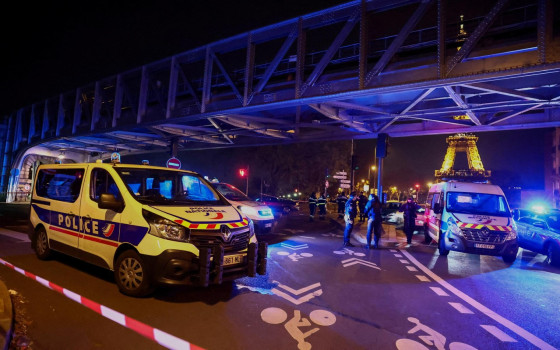Running over people in the streets... The car has become a terrorist weapon that has plagued European capitals.

- Europe and Arabs
- Wednesday , 30 April 2025 5:28 AM GMT
Brussels - Munich: Europe and the Arabs - Agencies
Following the horrific van attack in Vancouver, Canada, that claimed the lives of 11 people, we highlight a series of similar attacks in Europe, where cars have become tools of murder in deadly attacks that have included major cities such as Berlin, Nice, and London.
Eleven people were killed and dozens injured after a man plowed his car into a crowd during a street festival in Vancouver on Saturday night, in a horrific incident reminiscent of previous attacks in which vehicles were used as weapons.
Police arrested a 30-year-old man at the scene, and authorities confirmed he had a long history of mental health issues. He has been formally charged with multiple murders in connection with this deadly attack. This came in a report published by the European News Network in Brussels, Euronews, on Wednesday.
The report added that, in the same context, Vancouver police said there were no initial indications of a terrorist motive behind the attack targeting the Philippine Lapu-Lapu Day Festival, but stressed that the attack was not classified as an act of terrorism. The city's interim police chief, Steve Wray, stated that the suspect, Kay-J Adam Low, had "a significant history of interactions with police and healthcare professionals due to mental health issues."
Germany... The Most Violent Attack Recently
In the latest in a series of vehicular attacks targeting crowds, two people were killed on February 13 after a car plowed into them during a labor union demonstration in Munich.
The attack injured approximately 39 people, while police arrested a 24-year-old Afghan man who had entered Germany seeking asylum. According to prosecutors, evidence suggests the suspect had a motive linked to Islamic extremism. This was not the only recent incident in Germany. On December 20, 2024, at least five people were killed and more than 200 injured when a car plowed into a Christmas market in the eastern city of Magdeburg.
In that incident, authorities arrested a 50-year-old Saudi doctor who had renounced Islam and was believed to have supported the far-right Alternative for Germany party.
In June 2022, a 29-year-old man drove his car into a group of pedestrians in Berlin, killing one person and injuring dozens. Police identified the driver as a German man of Armenian origin. 2017... Escalation in Vehicle Attacks
Although the use of vehicles as a weapon was not common in the years prior to the recent escalation in Germany, 2016 and 2017 saw a series of horrific attacks using this tactic to target civilians, particularly in Europe.
In Spain, specifically in August 2017, an attacker drove a van into a crowd on Barcelona's famous Las Ramblas avenue, killing 14 people and injuring dozens more. ISIS claimed responsibility for the attack. Shortly after, members of the same cell carried out another attack in the nearby resort of Cambrils, killing one woman.
In Britain, two horrific attacks took place in the capital, London, in June of the same year. On June 3, three attackers drove a van into pedestrians on London Bridge, then got out and proceeded to stab people in nearby Borough Market, killing eight before being shot dead by police.
Just two weeks later, on June 19, right-wing extremist Darren Osborne drove his car into worshippers outside Finsbury Park Mosque, killing one man and injuring 15 others. Osborne was convicted and sentenced to life imprisonment in what was considered one of the most high-profile religious hate attacks in the UK.
These events were preceded by a bloody attack on March 22, when Khalid Masood, a British citizen, drove an SUV into pedestrians on Westminster Bridge, killing four people. He then got out and stabbed a police officer to death at the entrance to the British Parliament before being shot dead by security personnel. Attacks without training... and a low risk of detection
In December 2016, the German capital, Berlin, witnessed one of the deadliest truck attacks in Europe. Anis Amri, a Tunisian asylum seeker, carried out a hijacked truck attack, ramming it into a crowded Christmas market, killing 13 people and injuring dozens. Days later, Amri was killed in a shootout with Italian police.
In France, the July 2016 Nice attack marked a dangerous turning point in terrorist tactics. Mohamed Lahouaiej Bouhlel, a Frenchman of Tunisian origin, used a rented truck and drove it for two kilometers through crowds celebrating Bastille Day on the Riviera resort's promenade. The attack left 86 people dead, making it the deadliest truck attack in Europe. Although he was killed by police, eight people were later convicted of assisting in the operation. This type of attack isn't unique to the last decade. The first documented mass ramming attack dates back to 2009 in the Netherlands. On April 28, Karst Tiets, a former security guard, drove a car into spectators during a parade in the city of Apeldoorn, targeting a bus carrying members of the Dutch royal family. The attack killed six people, and the attacker died of his injuries the next day.














No Comments Found